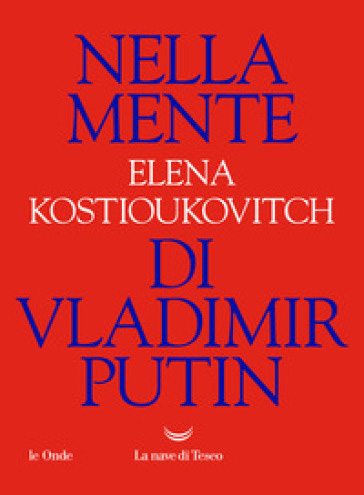Piedmont, as its name tells us, lies “a piè dei monti”, at the foot of the mountains, which form the entire territory of the adjacent Valle d’Aosta, between the Alps to the north and west and the Appennines to the south.
The character of this region recalls the Valle d’Aosta, and Piedmont too was under the rule of the Savoy dynasty, though with some interruptions. The Savoys fought against France repeatedly from the sixteenth century on, then in the early eighteenth century the French took Piedmont from them, later gave it back, and afterwards began to reconquer it… But even in periods when the political predominance of its powerful neighbors from across the Alps was less discernible, the French spirit continued to be felt. Through its association with France, some characteristic features of Piedmont were formed: gallantry, refinement, perfectionism. It is not paradoxical therefore that even simple, typical peasant dishes, similar to those of the Valle d’Aosta, are brought to perfection in Piedmont and prepared as true works of art.
Piedmont is a jigsaw puzzle of 1,209 towns and villages, each situated in its own unique setting, whether among fields, on hills or mountain slopes, beside lakes or on the banks of rivers. Here, as in Valle d’Aosta, there are Waldensian towns (with their own cuisine and their own rituals). Franco-Provençal towns are found in the province of Cuneo, and Occitans who once came from Provence live in the extreme west.
Prominent Walser communities, whose language and cuisine are German, are found in Valsesia, in the valleys of the Ossola and in Valstrona. Unlike the Waldensians, the Walsers are not a religious minority, but an ethnic one. Their ancestors (also called vallesi, from “valle”, valley) were ancient Germanic tribes. Having come here from across the Alps between the eleventh and thirteenth centuries, these Germans reached an agreement on hereditary tenancy with the local administration, and saw to clearing and ploughing the virgin lands: they were not afraid of hard work.
In the fifteenth century many families emigrated back to Switzerland and Germany, where they went into the textile trade. Energetic and quick to move, the Walser merchants maintained commercial and family ties with their native land. We know in fact that in those days merchants were at the same time traders, travellers and linguists; so it was that the Walsers became known for their audacious, cheerful character, their love of beer and their clever witticisms.
Like the majority of cities in the north and in particular like nearby Aosta, Turin, founded by the Romans, was originally named after ancient families, in this case the gens Julia and Augustus: Julia Augusta Taurinorum. But the nickname “taurino”, alluding to an obstinate bull (taurus), prevailed, and in the annals of history the city was left with simply the name Turin (Torino).
Turin was the capital of a Kingdom: the Kingdom of Sardinia from 1713, and later the Kingdom of Italy from 1849 to 1861. In Italy’s recent history, only Naples, besides Turin, has played this role: it was capital of the Kingdom of Naples from 1282 to 1815 and capital of the Kingdom of the Two Sicilies from 1816 to 1860.
Other cities might be capitals of counties, duchies, marquisates or independent republics, but there have been no other capitals in Italy where myth and symbols are so closely associated with monarchic history, and with unusual objects venerated by Christianity, namely, the Holy Shroud in Turin and San Gennaro’s blood in Naples.
The Shroud figures quite frequently in literary texts. A fictionalized version of its apparition is presented in the novel Baudolino by Umberto Eco. What is known about it for certain is that in 1349, in France, the knight Geoffroy de Charny claimed to possess a sheet of unknown provenance on which the features of a human figure (presumably Christ) were stamped. Ludovico (Louis) I of Savoy acquired the Shroud in 1453. Since that time the relic has been preserved in the city of Turin.
It was from Turin, capital of the only State in the Appennine peninsula territory free from foreign rulers, that the impetus for the unification of Italy came, beginning in 1848 (with the first war of independence). It was here that in the nineteenth and early twentieth centuries the national intelligentsia was forged, that was able to define Italy’s cultural and political visage and pave the way for the “Italian miracle” destined to flourish in the twentieth century. The Count of Cavour, organizer of the struggle for national unity, and an astute diplomat, was one hundred percent Turinese – confirming the current designation (abrupt and sketchy to be sure): “torinesi falsi e cortesi”, Turinesi: deceitful and polite. Not only that, he was irreversibly Piedmontese, to such an extent that he wrote his political works in French.
The Francophone Cavour was a living illustration of another Italian saying, that could serve as a slogan for this book: “Parla come mangi!”, “speak the language of your food” (if someone lives in a place and eats the dishes of a specific culinary school, he should also use the “mother tongue” of those dishes). Cavour expressed himself in French both in his daily life, and in politics, and as a manifestation of the popular saying, he was gastronomically Francophile. The menu of his dinners is still offered today at the Ristorante del Cambio, an historical restaurant where the customer arrives and is seated on a crimson settee at a baroque table adorned with a small tricolor flag, in a private alcove. There he is served the way they used to serve Cavour, with the same dishes. These menus reflect the continental, rather than Mediterranean, coloring of Cavour’s culinary preferences, and even an anti-Mediterranean note. Typical dishes “with a French accent” are generally diffuse in Piedmontese cuisine (and have been since antiquity, as we know from an eighteenth century treatise on cooking, Il cuoco piemontese perfezionato a Parigi, The Piedmontese chef trained in Paris, 1766).
An example of this is the “finanziera” [financière or truffle sauce; tr.n.], a dish well-loved by Cavour. It is made of beef entrails and genitals, boiled in a mixture of vinegar and Marsala wine, flavored with the local Barolo wine. The canonical recipe calls for kidney, calf’s brain, chicken livers, sweetbreads, cockscombs, and mushrooms. All served on flaky pastry shells (vol-au-vents) or accompanied by plain risotto.
As in Lombardy, the spinal marrow of bovines is readily included in recipes in Piedmont, though here it is called “filone” not “midollo” as in the rest of Italy. The substance of the marrow is incredibly fatty and is used for browning roasts, pork shanks, and porcini mushrooms. Bone marrow is also included in the recipe for frisse, meatballs of chopped lung, heart and liver. An exclusive meat is obtained in Piedmont from the so-called “fat ox” (bue grasso); the meat can be recognized at a glance since it is “marezzata” or veined with fat (what other countries call “marbled meat” for assonance and because of its external appearance).
The fat ox is bred in Carrù (Cuneo) and in Fassone, not far from Asti. It is a special Piedmontese white breed, fed with bran, whey, wheat, sugar beets, and often even zabaglione, in order to increase muscle mass. These oxen can weigh as much as 1,250 kilograms and are not able to walk on their own. The Fat-Ox Festival has been held in the village of Carrù since 1910, two Thursdays before Christmas (see SAGRA). A marble monument, the work of sculptor Raffaele Mondazzi, has been erected to these titans in Carrù, entitled Il Belvedere di Carrù (the panorama of Carrù): on its base, six bas-reliefs immortalize the bovine’s brief journey from cowshed to slaughter house to celebratory table.
Turning instead to the Gran bollito (boiled meats platter), a favorite dish of Vittorio Emanuele II, “the rule of seven” should be recalled: seven cuts of meat, seven “ornaments”, seven dipping sauces and seven vegetable side-dishes.
The bollito is in fact made up of seven cuts: mock tender (chuck), shank, ribs, butt end, rump, rump tip, and rolled breast (bonelesss breast rolled up and tied around a filling of salt pork or prosciutto, cooked salami, two eggs, a whole carrot, herbs and pepper, that is then cut into slices).
The seven “ornaments”, which are also meat, are cooked in separate pots. Indeed these constitute the true essence of the typical bollito: calf’s head complete with snout, veal’s tongue, calf’s foot, calf’s tail, a chicken, a cotechino sausage and a loin sausage (the plump boneless breast rolled around herbs and roasted at a high temperature is the only roasted piece that is part of the bollito).
And that’s still not all! To this marvel, seven side-dishes must be added: boiled potatoes, spinach, red onions boiled in vinegar, turnips, carrots, celery and leeks.
Finally, this culinary madness is brought to the table with seven sauces: first a green sauce, then a red one, then a honey sauce, as well as a sauce of cougna (grape must jam) with raisins, a horse radish sauce, Cremona “mustard” and mustard.
Sometimes the meat is actually seasoned with fish, as in the case of vitello tonnato (veal in tuna sauce), a surprising combination of boiled veal with preserved tuna. The slices of veal are arranged on a plate and topped with the tuna sauce (fresh mayonnaise mixed with flaked tuna, hard-boiled eggs, capers and anchovies).
English translation copyright © 2009 by Anne Milano Appel


